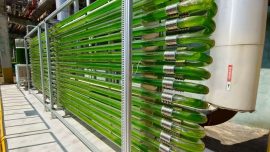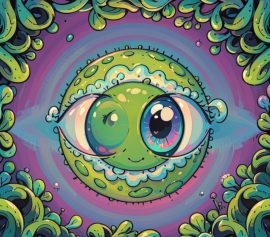tap培养基用于莱茵衣藻的培养,以下为原版配方
from Gorman, D.S., and R.P. Levine (1965) Proc. Natl. Acad. Sci. USA 54, 1665-1669.
This is probably the most widely-used medium at present for experimental work.
Make the following stock solutions:
1. TAP salts
NH4Cl 15.0 g
MgSO4 . 7H2O 4.0 g
CaCl2 . 2H2O 2.0 g
water to 1 liter
2. phosphate solution
K2HPO4 28.8 g
KH2PO4 14.4 g
water to 100 ml
3. Hutner’s trace elements
To make the final medium, mix the following:
2.42 g Tris
25 ml solution #1 (salts)
0.375 ml solution #2 (phosphate)
1.0 ml solution #3 (trace elements)
1.0 ml glacial acetic acid
water to 1 liter
For solid medium, add 15 g agar per liter
Autoclave.
For Tris-minimal medium omit the acetic acid and titrate the final solution to pH 7.0 with HCl
Hutner’s trace elements
Hutner et al. (1950) Proc. Am. Philos. Soc. 94, 152-170
This mixture is used both in TAP and in the Sueoka high salt medium.
For a detailed analysis of how well this trace elements solution meets the nutritional requirements of C. reinhardtii, see Merchant et al. (2006) Biochim. Biophys. Acta 1763, 578-594.
For 1 liter final mix, dissolve each compound in the volume of water indicated.
The EDTA should be dissolved in boiling water, and the FeSO4 should be prepared last to avoid oxidation.
compound amount water
EDTA disodium salt 50 g 250 ml
ZnSO4 . 7 H2O 22 g 100 ml
H3BO3 11.4 g 200 ml
MnCl2 . 4 H2O 5.06 g 50 ml
CoCl2. 6 H2O 1.61 g 50 ml
CuSO4 . 5 H2O 1.57 g 50 ml
(NH4)6Mo7O24. 4 H2O 1.10 g 50 ml
FeSO4. 7 H2O 4.99 g 50 ml
Mix all solutions except EDTA. Bring to boil, then add EDTA solution. The mixture should turn green. When everything is dissolved, cool to 70 degrees C. Keeping temperature at 70, add 85 ml hot 20% KOH solution (20 grams / 100 ml final volume). Do NOT use NaOH to adjust the pH.
Bring the final solution to 1 liter total volume. It should be clear green initially. Stopper the flask with a cotton plug and let it stand for 1-2 weeks, shaking it once a day. The solution should eventually turn purple and leave a rust-brown precipitate, which can be removed by filtering through two layers of Whatman#1 filter paper, repeating the filtration if necessary until the solution is clear. Store refrigerated or frozen convenient aliquots. Some people shorten the time for formation of the precipiate by bubbling the solution with filtered air.
If no precipitate forms, the solution is still usable. However, you might want to check the pH in this case and adjust it to around 7.0 using either KOH or HCl as needed.



